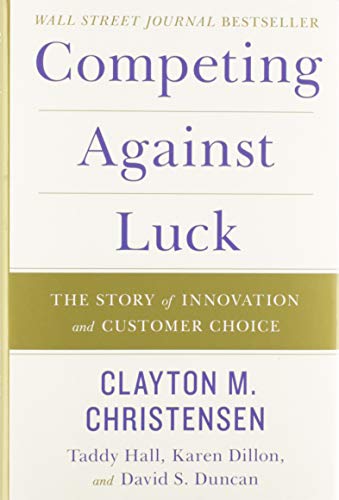Are You Disrupting? 2 Tips for Innovation

The managers in your organization who have most consistently delivered results in the past may be the least skilled at delivering success in new-growth businesses. -- Clayton M. Christensen, The Innovator’s Solution
When Steve Jobs took over the Macintosh project, one of the first things he did was move the team away from the established company—the Apple II people—and moved them to their own building.
For companies pursuing a disruption strategy, physically separating the new team from the old processes and methods seems to be a key aspect of success.
Steve Blank declares,
"Horizon 3 [ie., disruption] groups need to be physically separate from operating divisions (in a corporate incubator, or their own facility.)"
At the core of disruption is a focus on the “Jobs To Be Done.”
 Jobs To Be Done is the centerpiece of Competing Against Luck: The Story of Innovation and Customer Choice by Clayton M. Christensen. The Jobs To Be Done framework discounts the traditional marketing approach focused on demographics; instead, its focus is problems and the personas who have them.
Jobs To Be Done is the centerpiece of Competing Against Luck: The Story of Innovation and Customer Choice by Clayton M. Christensen. The Jobs To Be Done framework discounts the traditional marketing approach focused on demographics; instead, its focus is problems and the personas who have them.
Christensen describes the situation at Southern New Hampshire University (SNHU), ranked by Fast Company as one of the most innovative organizations in the world. (What? A university! Innovative?) In understanding the jobs to be done, they learned that adults have very different problems than traditional students. They’re hiring the university for different reasons. Like Apple, once SNHU decided to make a real commitment to online learning, they moved the team to a new building in a former mill yard. What was critical was understanding the problems for adult learners, which differed dramatically from those of the traditional 18-year-old student.
In the book, Rod Hogan, vice president of New Business Development at Sargento, explains:
"Jobs Theory forces you to define the offering in the context of a very specific consumer struggle. And that is neither easy nor natural for most large companies."
Under10 Playbook is centered around the idea that “products solve problems for personas.” Problems, as in jobs to be done. The jobs to be done for product managers and their leaders is centralization of all product knowledge in a central place and consistency from product to product.
One of the companies I coach is moving to an entirely different online experience. In her first days, the new product manager has been pulled into meeting after meeting related to the old products. Yes, most of their revenues come from the traditional products but this revenue stream is starting to decay. The old team needs to focus on sustaining that revenue. To get the new idea to market, they’ll need a stand-alone team with its own budget and people dedicated exclusively to this project and no others.
For new growth products, how often are your decisions influenced by their impact on the traditional business? How often are you distracted or hampered by policies that don’t apply to your products?
The goal of an innovation is simply different from the goal of an existing product.
For established products, your goal is profit; you optimize to reduce costs of goods and cost of sale. By contrast, new-growth initiatives are optimized for learning, not profit, revenue, or market share.
Are you disrupting? Christensen might say, “what job is your persona hiring you to do?”
For any product, whether innovative or sustaining, the key is understanding personas and their real problems.

